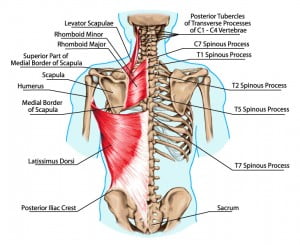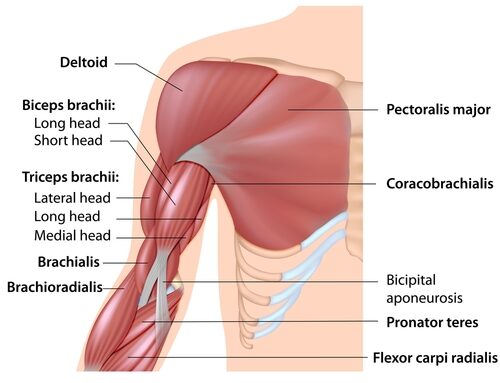Understanding Pain Between the Shoulder Blades
Experiencing a deep, sharp or burning sensation between the shoulder blades is common. This type of pain, interscapular pain, may leave you wondering about its origins. Often, such discomfort in the shoulder blade area arises from muscle strains or overextensions, particularly due to poor posture or prolonged periods in uncomfortable positions. Shoulder strain, specifically, can lead to pain and tension in the surrounding areas, affecting the upper back. For instance, hours hunched over a computer can lead to pain in the neck or upper back, sometimes manifesting as a sharp sting under either the right or left shoulder blade.
While muscle strain and posture issues are common culprits, it’s important to note that the cause of shoulder blade pain isn’t always musculoskeletal. Given its location, the pain could indicate more severe conditions, like a heart attack or gallbladder disease, which necessitate urgent medical care.
This article delves into the prevalent causes of upper back pain, explores potential home remedies to alleviate discomfort, and highlights when it might be a good idea to consult a physician for expert medical help.
The Muscle Behind the Pain: The Rhomboids

Symptoms of Rhomboid Trigger Points
What Are The Possible Causes of Pain Under the Shoulder Blades?

How to Alleviate Upper Back & Shoulder Pain – Treatment Options
Alternative Causes of Pain Under Your Shoulder Blade
Here is a list of possible reasons you could have upper back or shoulder pain
Bulging or Disc Herniation
Disc herniation occurs when the soft center of a spinal disc pushes through a crack in the tougher exterior casing. This can irritate nearby nerves, leading to pain that radiates to other parts of the body, including the area between the shoulder blades. Disc herniation in the thoracic or cervical spine is more likely to cause upper back problems.
Spinal Misalignment
Another possible reason for pain in this area is misalignment of the spine. This condition may arise due to several factors, such as:
- Sustaining an injury from incidents like falls or vehicular collisions
- Maintaining poor posture
- Sleeping in a position that doesn’t support the spine properly
- Performing repetitive movements
This type of misalignment can lead to pain in the area between the shoulder blades or in the neck.
Arthritis
Arthritis refers to the swelling and tenderness of one or more of your joints. Intrascapular pain usually refers to osteoarthritis of the thoracic spine. As the cartilage wears down, bones can rub against each other, causing pain and stiffness in the back.
Fibromyalgia
A disorder characterized by widespread musculoskeletal pain, fibromyalgia can lead to tenderness and pain in the upper back area. Its exact cause remains unknown, but it’s believed to involve various genetic and environmental factors.
Shingles
Caused by the same virus responsible for chickenpox, shingles can lead to a painful rash that often appears as a single stripe wrapping around the body’s left or right side. The pain can sometimes be felt between the shoulder blades.
Acid Reflux
Acid reflux, also known as gastroesophageal reflux disease (GERD), occurs when stomach acid frequently flows back into the esophagus. This can lead to a burning sensation in the chest and, occasionally, pain near the shoulder blades.
Nerve Compression
Compression or a pinched nerve, often due to herniated spinal discs or bone spurs, can cause pain in the upper back.
Gall Bladder Infection
Gallstones or inflammation of the gall bladder can sometimes cause pain that is felt between the shoulder blades or under the right shoulder.
Heart Attack
While chest pain is the most common symptom of a heart attack, some people may experience pain in the back shoulder blade area, especially women.
Thoracic Aorta Rupture
This heart condition refers to a tear or rupture in the aorta, the main vessel supplying blood to the body. It can lead to severe internal bleeding and is often caused by traumatic injuries.
Pulmonary Embolism
A blockage in one of the pulmonary arteries in the lungs, usually due to blood clots, can result in chest pain that may also be felt between the shoulder blades.
Shoulder Joint Bone Spurs
Bone spurs are bony projections that develop along bone edges, often in joints. If they form in or around the shoulder joint, they can cause pain in the shoulder region, which might radiate toward the scapula.
Aortic Dissection
A serious condition where the large blood vessel branching off the heart tears. This can cause sharp or burning pain down into the shoulder and requires immediate medical attention.
Compression Fracture
A fracture of the scapula may cause pain in the shoulder blade region
When To See A Doctor
As you can see from our list above, some reasons for shoulder pain may be serious, even deadly in certain situations. If severe pain persists and interferes with your mobility or regular activities, see a doctor to find relief.
If you experience any of the following symptoms along with a burning sensation between shoulder blades, you should visit a doctor right away.
- Dizziness and lightheadedness
- Shortness of breath
- Sweating
- Fever
- Swelling or redness of the legs and feet
- Coughing
- Rapid heartbeat
- Impaired vision
- Paralysis
- Loss of consciousness
- Trouble speaking
Shoulder pain can be a debilitating and frustrating experience, ranging from sharp and acute pain behind
the left shoulder blade to tightness between the shoulder blades, to chronic pain. The cause of the pain can be
linked to both the thoracic and cervical spine and can include poor posture, muscle tension, structural changes, and strain. Shoulder pain treatment can include physical therapy, massage, chiropractic adjustments,
and lifestyle changes. It is important to seek medical attention if the pain is persistent or severe, as the
cause of the pain may need to be evaluated and diagnosed.
Prevention and Maintenance For Shoulder Blade Pain
Understanding the causes and treatments of shoulder blade pain is essential, but preventing the pain or its recurrence is equally crucial. Here are some preventive measures and daily habits you can adopt:
- Ergonomics at Work: Ensure your workspace is ergonomic. Your computer screen should be at eye level, and your keyboard and mouse should be positioned so your elbows are at a 90-degree angle. This can prevent strain on your upper back and provide some pain relief.
- Regular Exercise: Engage in exercises that target and strengthen the upper back, shoulders, and core. This includes activities like rowing, swimming, and specific weight-training exercises.
- Posture Awareness: Be conscious of your posture throughout the day. Consider practicing yoga or Pilates, which emphasize alignment and balance.
- Stretching Routine: Incorporate daily stretching into your routine. Upper back stretches can relax tight muscles and improve flexibility, reducing the risk of strain.
- Healthy Weight: Maintaining a healthy weight reduces the strain on your muscles and spine, decreasing the risk of pain around the shoulder blades.
- Stay Hydrated: Muscles need water to function optimally. Ensure you drink enough water throughout the day to keep muscle cramps and stiffness at bay.
- Wear Supportive Footwear: Believe it or not, your shoes can impact your upper back and shoulder. Supportive footwear can promote proper alignment and may help relieve strain.
- Regular Check-ups: Schedule regular check-ups with a physical therapist or chiropractor, especially if you’ve had previous episodes of left or right shoulder blade pain. They can provide guidance on preventive exercises and pain management.
By implementing these strategies, you can not only tackle the pain you’re currently experiencing but also reduce the chances of future episodes.
Your physician is instrumental in pinpointing the cause of your shoulder blade discomfort and guiding you toward the best treatment options. Before consulting a physical therapist, we recommend scheduling a massage therapy session with our seasoned massage therapists at Body Ache Escape Massage Center. At times, a single massage session can make the interscapular pain vanish. For scheduling, you can either book online or call us at 614-604-6358.
Some other articles about shoulder and back pain.
Sharp Pain in Your Shoulder Muscles
How To Fix Muscular Chest Pain







